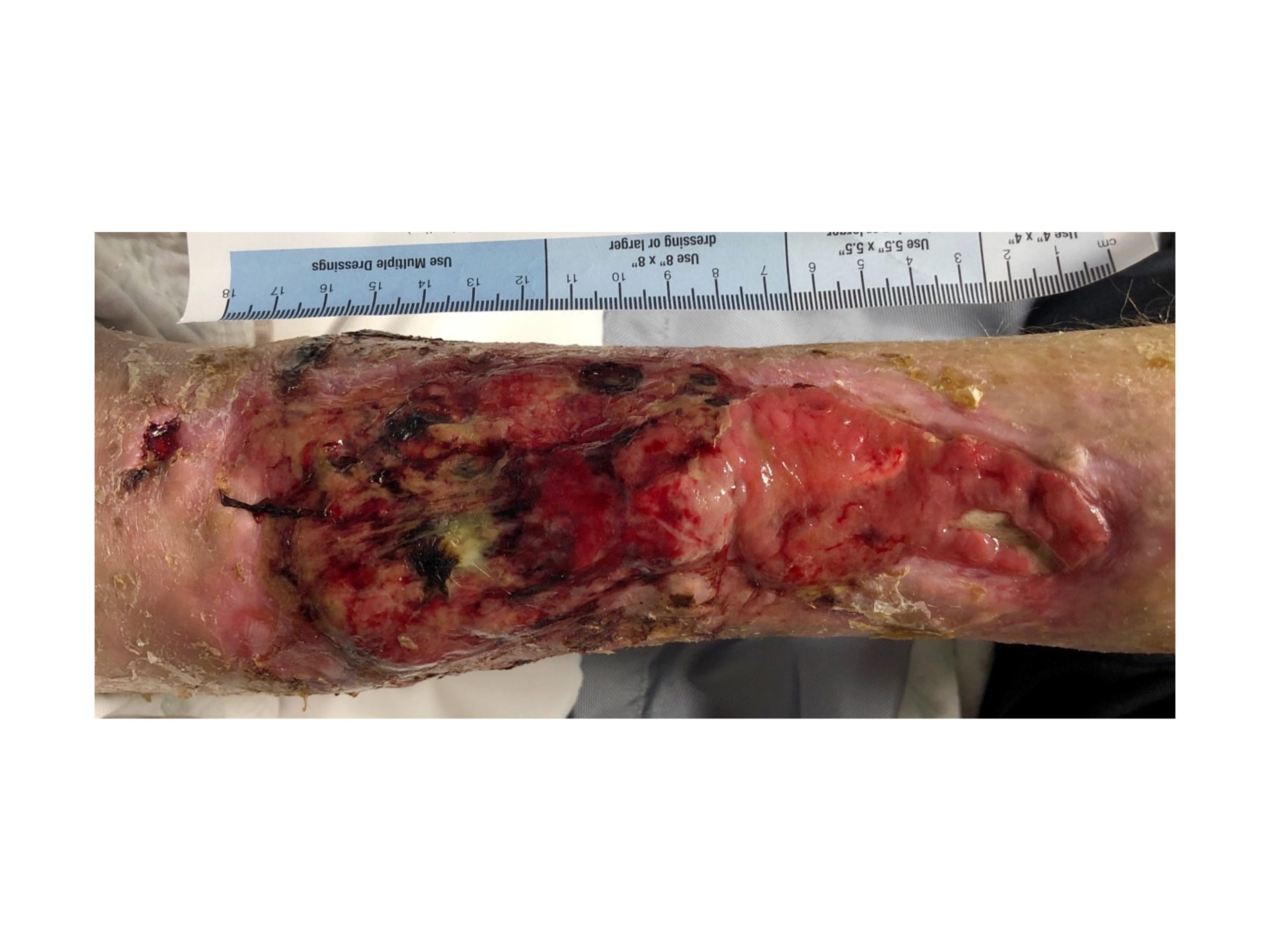Skin-rotting drug 'tranq' infiltrates US cities: 'Zombifying bodies' A disturbing drug ... [View all]
Skin-rotting drug ‘tranq’ infiltrates US cities: ‘Zombifying bodies’
A disturbing drug is spreading in US cities causing people to lurch like zombies and rotting the skin of desperate users who can’t give it up.
https://www.townsvillebulletin.com.au/news/world/skinrotting-drug-tranq-infiltrates-us-cities-zombifying-bodies/news-story/d8811f89dba8eafb828d951bd949c666
WARNING: CONFRONTING IMAGES
A new drug in the US has unsettling – and in some cases deadly – consequences.
Xylazine — otherwise known as “tranq,” “tranq dope” and “zombie drug” — is wreaking havoc in major cities across the country with its devastating effects: It can literally rot the user’s skin.
The substance, which seemed to first appear in Philadelphia before migrating west to San Francisco and Los Angeles, was used for cutting heroin, but, most recently, it has been discovered in fentanyl and other illicit drugs, reported the New York Post.
While approved by the Food and Drug Administration for veterinary use, xylazine, a non-opioid, is not safe for humans, and those who overdose on the drug do not respond to naloxone, or “Narcan”, the most common overdose reversal treatment.
Xylazine causes sedative-like symptoms, such as excessive sleepiness and respiratory depression, as well as raw wounds that can become severe and spread rapidly with repeated exposure. The crusty ulcerations, which can become dead skin called eschar, can result in amputation if left untreated.
Snip...
More at the link.
A CASE OF SKIN NECROSIS CAUSED BY INTRAVENOUS XYLAZINE ABUSE
https://shmabstracts.org/abstract/a-case-of-skin-necrosis-caused-by-intravenous-xylazine-abuse/
Case Presentation: A 32-year-old male with a past medical history of hepatitis C, intravenous opioid abuse, and chronic non-healing ulcers of bilateral lower extremities presented to the ED out of concern for possible infection in his legs.
...Snip...
Discussion: This case illustrates the consequences of IV injection of Xylazine (“tranq”), a veterinary sedative-analgesic for large mammals. Its street availability has been reported in Puerto Rico and the Philadelphia area, and it is most often found as an adulterant in IV opioid preparations. It is a partial alpha-2 adrenergic agonist, and case reports of accidental injection and suicide attempts tell us about its effects in humans. Peripherally, alpha-2 agonism causes arterial constriction, but centrally, it acts as a sympathetic antagonist, decreasing heart rate and contractility. Acutely, this leads to hypotension and bradycardia, but also respiratory depression, acidemia and coma. Symptoms tend to persist for hours in humans, often remaining after the opioid’s effects have worn off. Xylazine withdrawal causes symptoms similar to that of benzodiazepines or other sedative-hypnotics. As corroborated in this case, Xylazine has also been reported to cause painful ulcers, perhaps mediated by its direct vasoconstricting effect on local blood vessels and resultant decreased skin perfusion.
Conclusions: The potential for increased use of Xylazine as an IV opioid adulterant portends a worrisome increase in the number of patients who may present for sequelae of IVDA, with the addition of serious skin and soft tissue infections, as well as more complex withdrawal physiology. IV drug users with ulcers similar to those here depicted should raise suspicion for concurrent Xylazine use.
IMAGE 1: Right lower leg and ankle on Hospital Day #1

